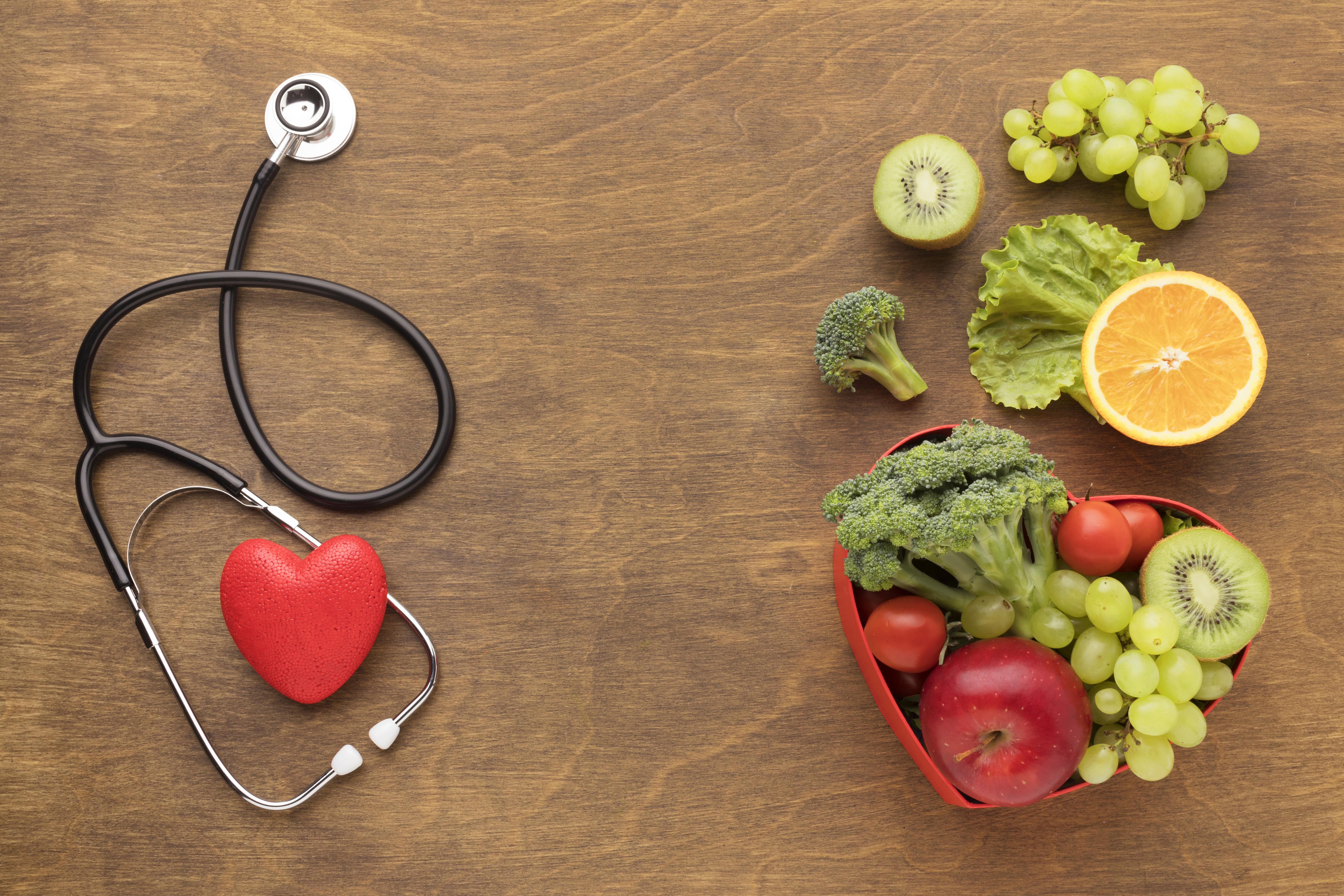As the saying goes, when talking about how good your heart is going to be, it really does apply with the idea: “You are what you eat.” Actually, our diet is literally the maker of our lives regarding the management of cholesterol and blood pressure, two major risk factors for cardiovascular health. Eating heart-healthy can be relatively easy and pay off big in overall wellbeing dividends—and help you avoid heart disease. We will discuss more in the article below some of the important tips of nutrition that can help you ensure far better heart health: the Mediterranean diet, omega-3 fatty acid benefits, and foods high in potassium.

Diet and Heart Health
Diet plays a huge role in heart health; thus, levels of cholesterol and blood pressure are very important to keep under control. Low intake of good diet increases the levels of bad cholesterol, LDL, and with that, blood pressure also, hence increasing the risks for the development of heart diseases. Healthy nutrition may on the other hand:
1. Reduction in Cholesterol: Food that balances HDL and LDL cholesterol consumption reduces the risk of plaque accumulation in arteries.
2. Blood Pressure Maintenance: A low-sodium and high-potassium diet contributes to blood pressure factor.
3. Body weight: Heart-healthy diet helps in maintaining a healthy weight, which is very important to ward off the risk of heart-related diseases.
1. Follow up with the Mediterranean Diet:
Most of the health benefits associated with the Mediterranean diet, however, are focused on heart health, and generally speaking, it really stands highly as among the very best diets for cardiovascular health. It places its emphasis on the following foods:
Fruits and vegetables: Very dense in vitamins, minerals, and antioxidants, they form most of the meals. Eat a rainbow to get most of the nutrients.
• Grains: Oatmeal, rice, quinoa, whole wheat bread—these things are rich in fiber. Fiber works two ways: It helps bring down the levels of cholesterol and brings about betterment in heart health.
• Healthy Fats: Sources include olive oil, nuts, and avocados rich in monounsaturated fats. These lower LDL cholesterol and raise HDL.
– Lean Protein: Introduce sources like fish, mainly the fatty ones such as salmon and mackerel, rich in omega 3s. It also includes poultry and legumes.
– Low Dairy: Low-fat or fat-free dairy needs to be taken to keep the intake of saturated fats at a low level.
– Red Wine: This is only heart-healthy in limited amounts. Some red wine contains antioxidants, but one should keep it scanty and discusses it with a health professional for advice.
2. Add Omega-3 Fatty Acids
The essential fatty acids associated with several benefits to heart health are the omega-3 fatty acids.
Lower Inflammation: Omega-3s depict anti-inflammatory activities across the body. They bring down inflammation, which keeps at bay the forerunners of heart diseases and other chronic diseases.
Lower Blood Pressure: Intake of omega-3 fatty acid relaxes blood vessels, thereby lowering blood pressure levels by some points and improving overall blood circulation.
Lower triglycerides: It does help reduce triglyceride levels within the body and promotes better overall cholesterol balance.
Sources of Omega-3s include:
• Fatty Fish: Salmon, mackerel, sardines, and trout are the best sources of omega 3s. One should try to include at least two servings of fatty fish in a week.
• Chia seeds and Flaxseed: Chia seeds and flaxseeds are plant-based sources for omega 3s and can easily be added to smoothies, yogurt, or salads.
Walnuts: A fistful of walnuts provides a good dosage of omega 3s and makes for a good snack.
– Algal Oil: For people who like plant-based alternatives, algal oil supplementation is rich in omega-3s.
3. Get Plenty of Potassium Rich Foods
That is where potassium comes in, to offset this effect of sodium on raising blood pressure. Foods that are rich in potassium can, therefore, balance out the blood pressure. Among the very good sources include the following:
– Bananas: Succulent, easy to access, bananas make it under the category as one of the most prominent sources of potassium.
– Sweet Potatoes: A great source of potassium, fiber, and even vitamins, it’s suitable to be taken with dishes and used as ingredients in most meals.
Leafy Greens—Spinach and Kale: All green leafy vegetables are supercharged with much potassium, besides other very vital vitamins and minerals. There are other leafy greens abundant to be worth having in your diet.
Avocados: Full of healthy fats and a good source of potassium. They can easily be tossed into salads or sandwiches, or eaten by themselves as a stand-alone snack.
Beans and Lentils: Such legume is ample in potassium, fiber, and plant protein. Tips on Heart-Healthy Eating
1. Sodium Intake: Limit foods that are processed and have added salt. Season foods with herbs and spices instead.
2. Lean Protein Choices: Replace red and processed meats with chicken, turkey, and plant-based protein sources to achieve leaner protein intake.
3. Watch Your Portion Sizes: Pay attention to serving size of all foods and beverages: healthful and not so healthful. Be aware of portion sizes and build nutrient-dense, portion-controlled meals.
4. Keep Yourself Hydrated: Water intake is important to blood pressure, but also to all other human bodily systems.
5. Eat at Home: You can account for the ingredients which go into your food, and skip the terrible ingredients most restaurants add to your dishes.
Conclusion
Eat for a Healthy Heart Eat for a good heart, and you will be preventing and controlling some of the major risk factors of cardiovascular disease. This will be supported by the Mediterranean diet, getting an adequate amount of omega-3 fatty acids, and foods rich in potassium. Dietary changes at all times should form part of an overall plan incorporating regular physical activity alongside other healthy lifestyle choices. Now, thanks to those tiny changes, your heart will!